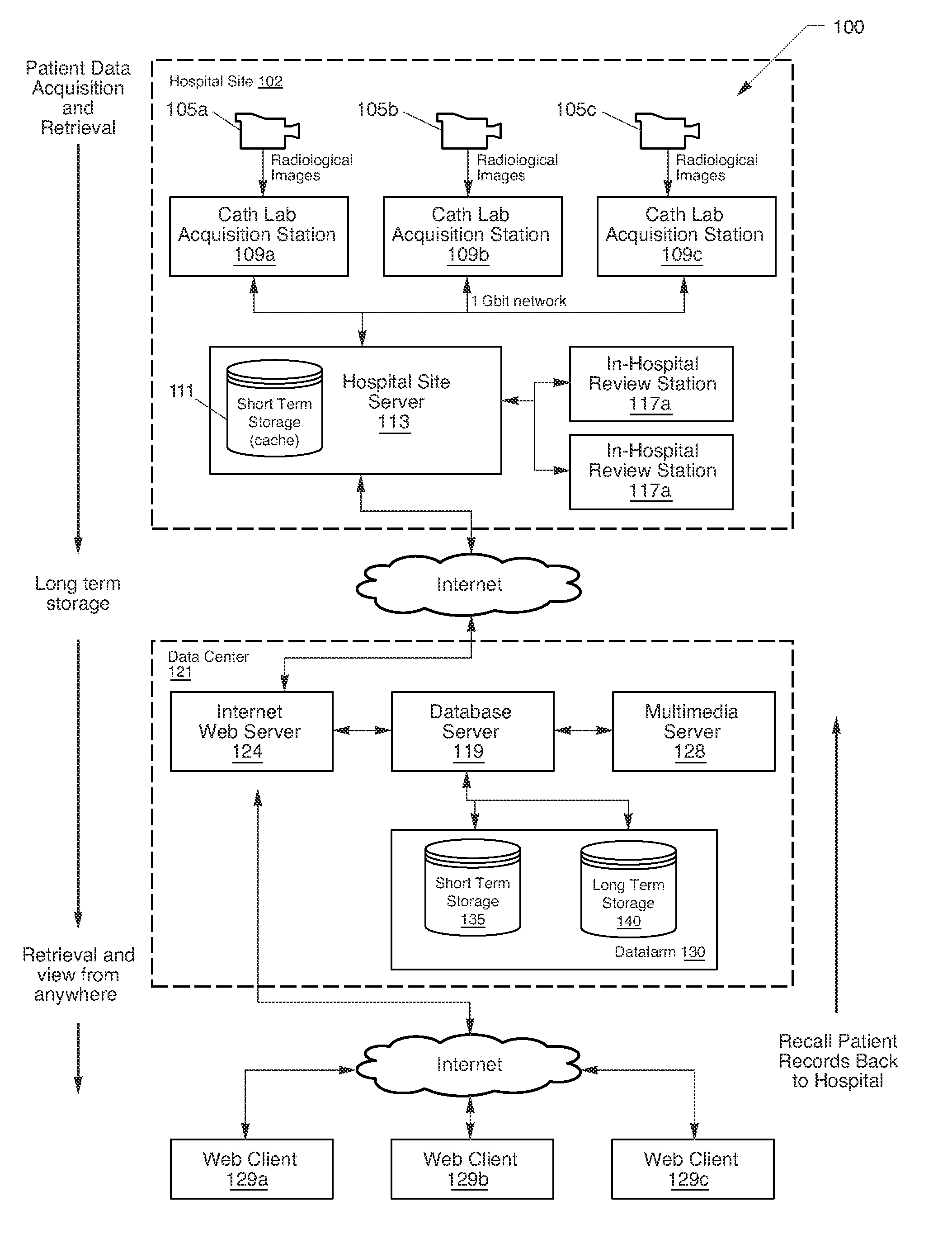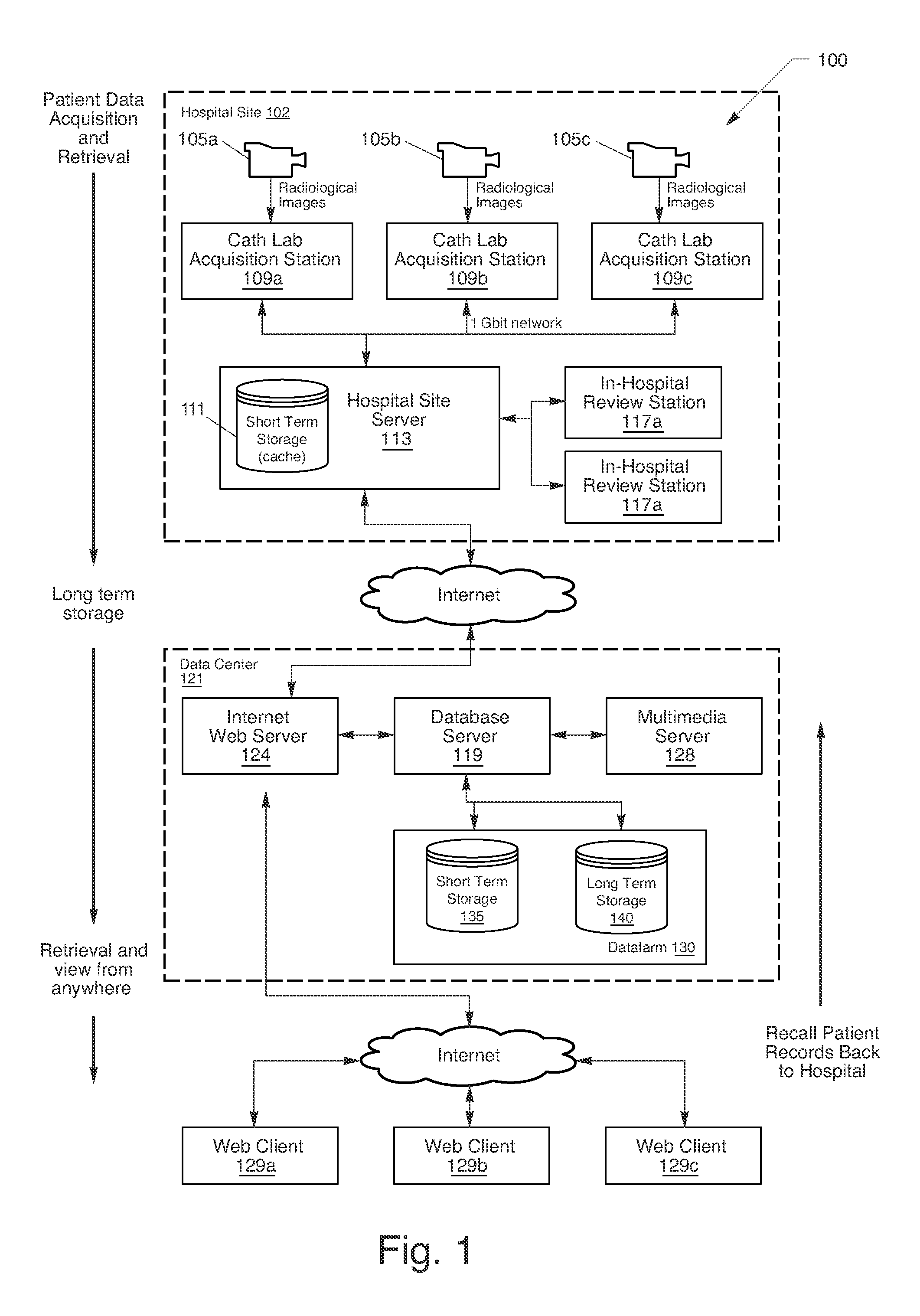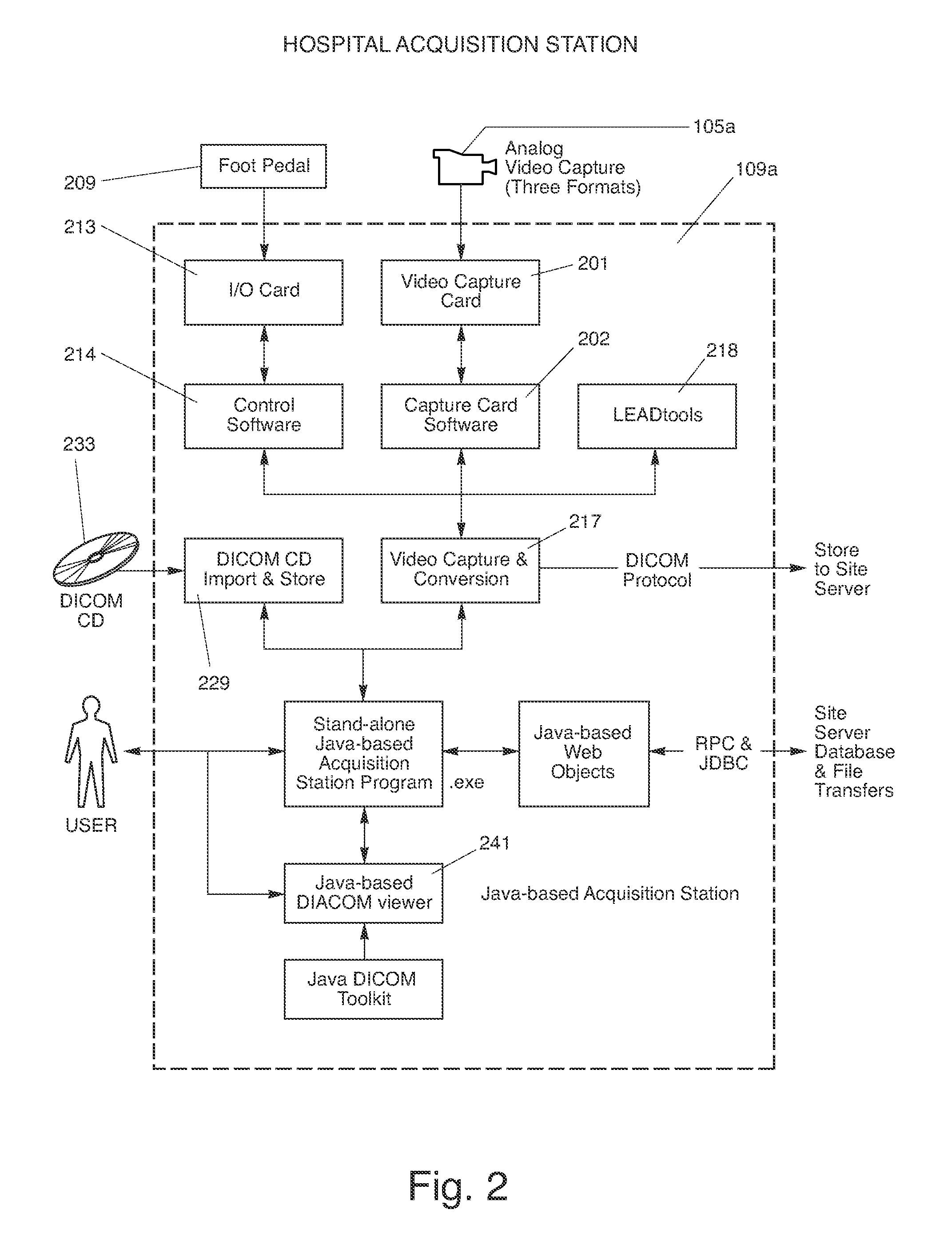Medical Image Capture System and Method
a medical image and capture system technology, applied in the field of medical image capture system and method, can solve the problems of requiring a significant amount of cost and time to file and retrieve, traditional paper and film storage methods require a significant amount of space, and the traditional method of archiving patient records involves substantial costs. to achieve the effect of facilitating the sharing of lossless dicom data
- Summary
- Abstract
- Description
- Claims
- Application Information
AI Technical Summary
Benefits of technology
Problems solved by technology
Method used
Image
Examples
Embodiment Construction
[0046] The following detailed description discusses the invention utilized in conjunction with captured medical images.
[0047] A. Overview
[0048] In one embodiment inside a hospital, a medical image system makes use of three differing technologies: (1) The DICOM video standard, (2) Analog image capture, and (3) High speed (Gigabit), local area networking. DICOM, an acronym for Digital Information and Communications in Medicine, is commonly used by a majority of medical imaging applications. DICOM defines both an image file format as well as a network protocol, enabling imaging and acquisition products from a variety of vendors to interoperate. For a more complete discussion of the DICOM standard itself, please refer to the following resources:
[0049] Radiological Society of North America (RSNA)—A Non-Technical Introduction to DICOM: http: / / www.rsna.org / REG / practiceres / dicom / nontechi-ntro.html National Electrical Manufacturers Association (NEMA)—The DICOM Standard: http: / / medical.nem...
PUM
 Login to View More
Login to View More Abstract
Description
Claims
Application Information
 Login to View More
Login to View More - R&D
- Intellectual Property
- Life Sciences
- Materials
- Tech Scout
- Unparalleled Data Quality
- Higher Quality Content
- 60% Fewer Hallucinations
Browse by: Latest US Patents, China's latest patents, Technical Efficacy Thesaurus, Application Domain, Technology Topic, Popular Technical Reports.
© 2025 PatSnap. All rights reserved.Legal|Privacy policy|Modern Slavery Act Transparency Statement|Sitemap|About US| Contact US: help@patsnap.com



